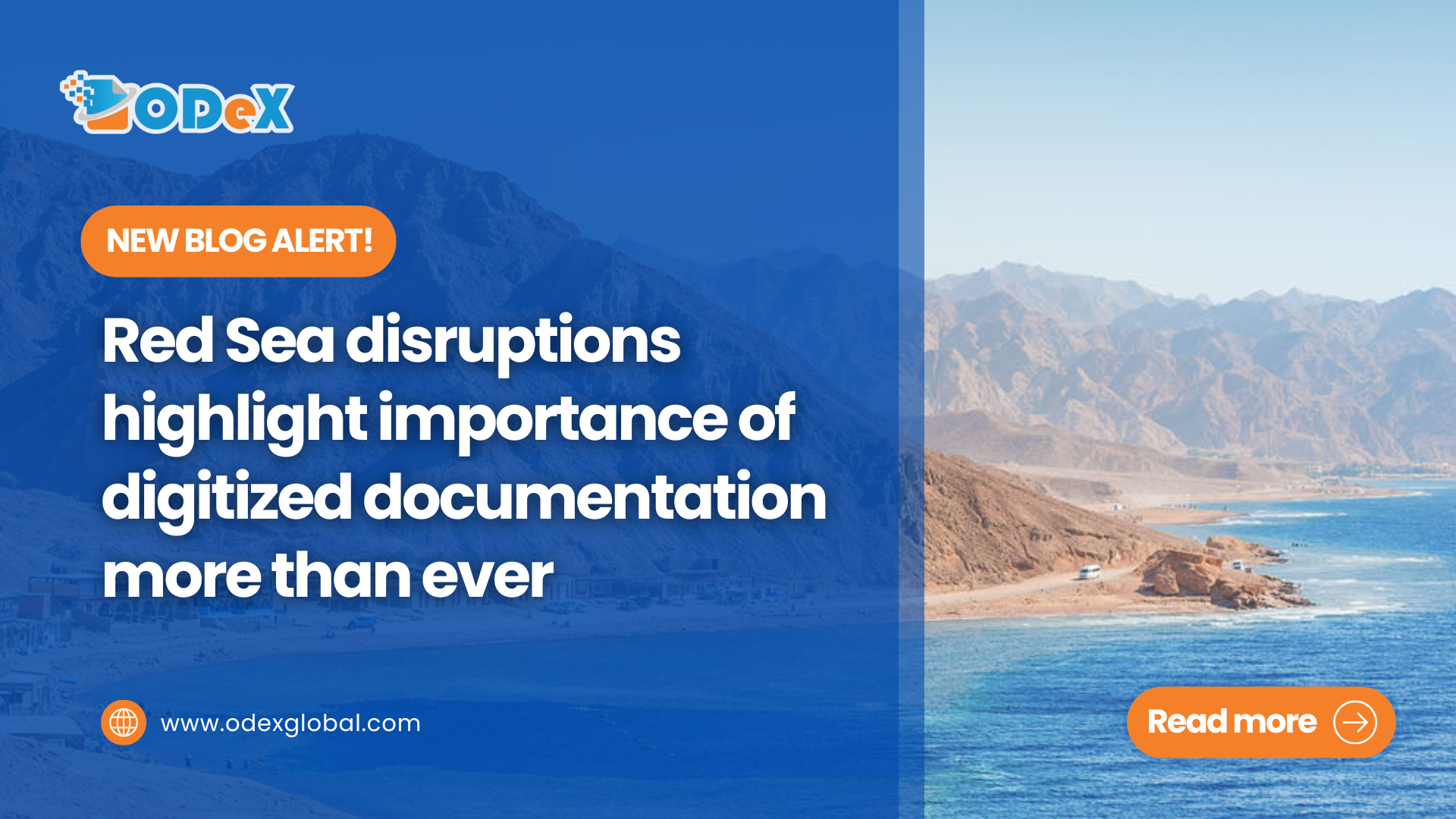Red Sea disruptions highlight importance of digitized documentation more than ever
When you read news about global shipping, one topic that still makes the headlines some 500+ days into the conflict is the situation in the Red Sea.
The Red Sea crisis began on 19 November 2023 when Yemen’s Houthi rebels hijacked the Bahamian-flagged car carrier Galaxy Leader, citing the Israel–Gaza conflict. Since then, the Bab El Mandeb strait—a key maritime route connecting the Mediterranean Sea to the Indian Ocean—has effectively turned into a war zone.The biggest impact has been that shipping lines have been forced to reroute their ships around the cape of good hope, extending transit times by 10–14 days, adding fuel costs, and triggering equipment shortages in key regions. For many shippers, it’s déjà vu of the pandemic-era supply chaos.
With heightened security risks and frequent attacks on commercial vessels, the red sea—once a vital artery of the global trade network—is now a hotspot of disruption. But while physical bottlenecks have made a dramatic return, the digital bottlenecks remain the same—and this is where many businesses are falling short. If there was ever a time to embrace digital documentation, this is it.
The disruption dilemma: Physical delays meet paper frustration
Let’s say your container is rerouted due to red sea unrest. Your original ETA is now off by two weeks. The carrier switches ports. The consignee changes the delivery address. Every link in the chain must adapt, fast.
But here’s the problem: if your documentation process is still handled via email, spreadsheets, or printed paper, you’re in no position to move quickly.
In times of disruption, waiting for couriered documents or manual invoice approvals and payments can result in:
-
Days in delay.
-
Thousands in storage, demurrage, or port charges.
-
Broken commitments to customers.
- Missed production schedules.
Where ODeX makes the difference
ODeX was built for agility. It doesn’t matter if your ship reroutes, if your container is delayed, or if your delivery instructions change mid-transit—you can manage your cargo release documentation instantly, digitally, and securely.
-
Access documents anytime, anywhere: When vessels are rerouted or ports change unexpectedly, getting the right documents quickly becomes critical. Giving importers, freight forwarders, and carriers secure digital access to invoices, delivery orders, and release instructions is critical, no matter where they are.
-
Keep moving despite delays: This is especially helpful when original documents are stuck in transit or teams are working remotely due to route changes or extended voyages.
-
Pay faster, release faster: Slow bank transfers can delay cargo release and disrupt entire supply chains. ODeX’s integration with PayPal makes it possible to make payments in real time—speeding up delivery order release and container pickup.
-
Agility when it matters most: In high-risk zones or emergency reroutes, every hour counts. Quick, digital payments help companies stay ahead of disruption.
-
Everyone sees the same status: During crises like the Red Sea conflict, coordination across time zones is key. ODeX brings all parties—shippers, NVOCCs, customs brokers, and consignees—onto one platform with live updates on documents and payments.
-
No surprises, better planning: This shared visibility removes confusion, reduces back-and-forth communication, and helps teams plan ahead, even when routes change.
-
Fewer errors, faster updates: Manual paperwork is prone to mistakes—especially under pressure. Digital workflows reduce that risk by handling changes like reissuing invoices or updating delivery orders quickly and accurately.
A global wake-up call
If there’s one lesson the red sea disruption is teaching the trade world, it’s this:
| Digitisation is not a luxury for good times—it’s your lifeline during bad ones.
From the Suez canal blockage in 2021 to today’s geopolitical tensions, every major shipping disruption has revealed the same fault line: businesses that depend on manual processes suffer more.
Those who embrace digital documentation and payment platforms stay resilient, responsive, and reliable—even when the world isn’t.
Conclusion: prepare for the next disruption today
No one knows what’s next. Geopolitical tensions, extreme weather, port strikes—there’s no shortage of risks looming over the ocean shipping industry.
But while you can’t control global events, you can control your readiness. By digitising your documentation and financial and payment workflows, you gain:
-
Speed in issuing, revising, and sharing release documents
-
Efficiency and security for your freight payments
-
Confidence in your ability to adapt to whatever comes next
If the Red Sea conflict has taught us anything, it’s that agility is everything. And agility begins with digital tools like ODeX.


















